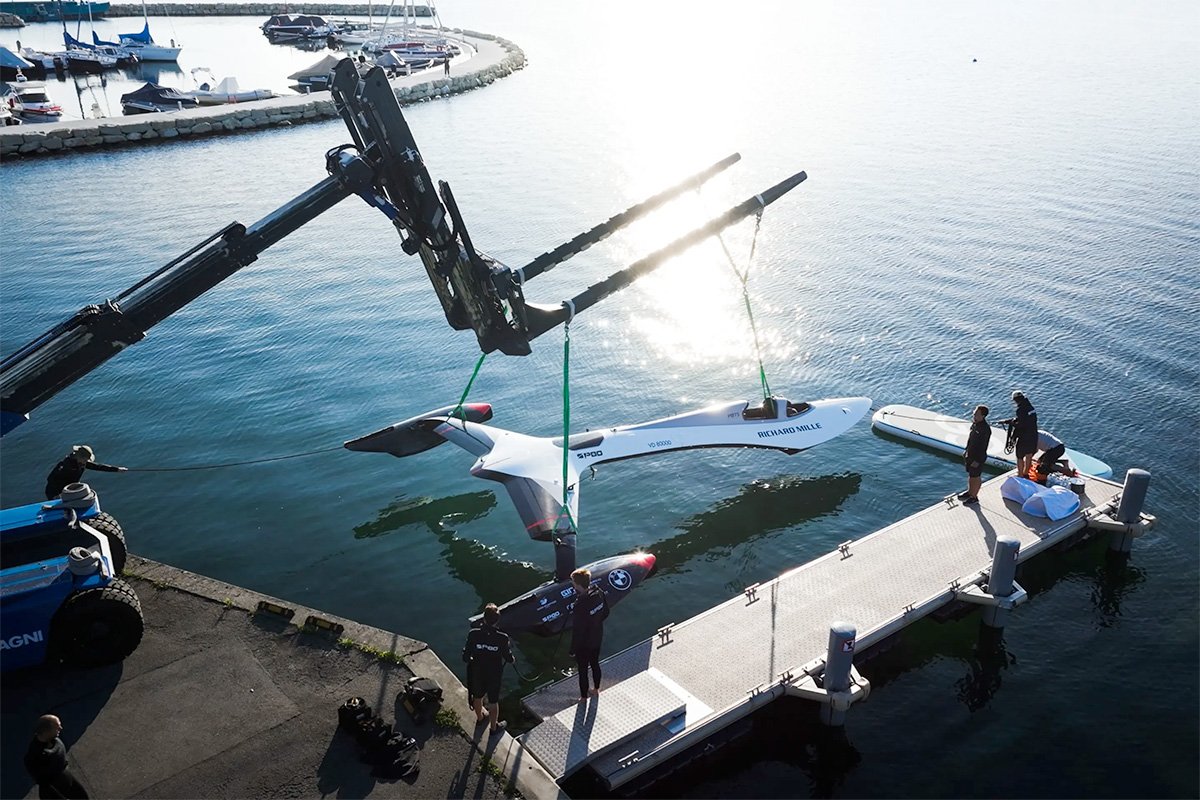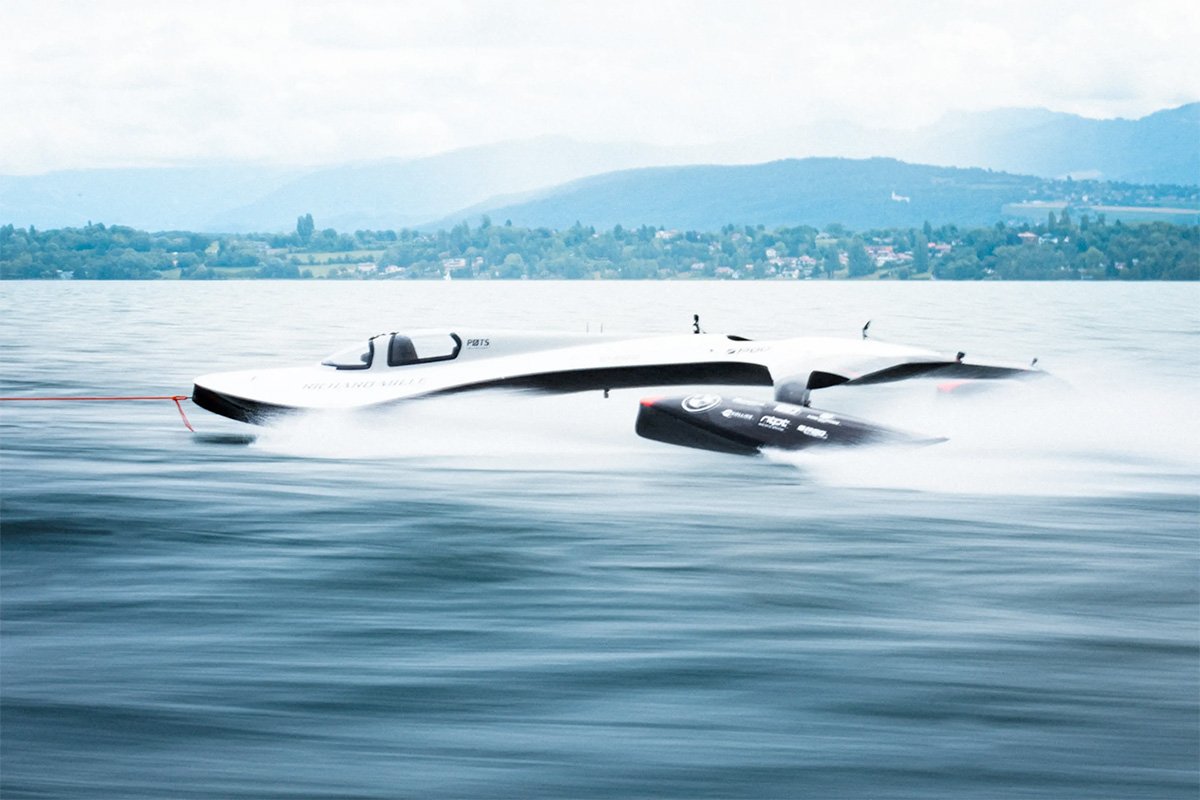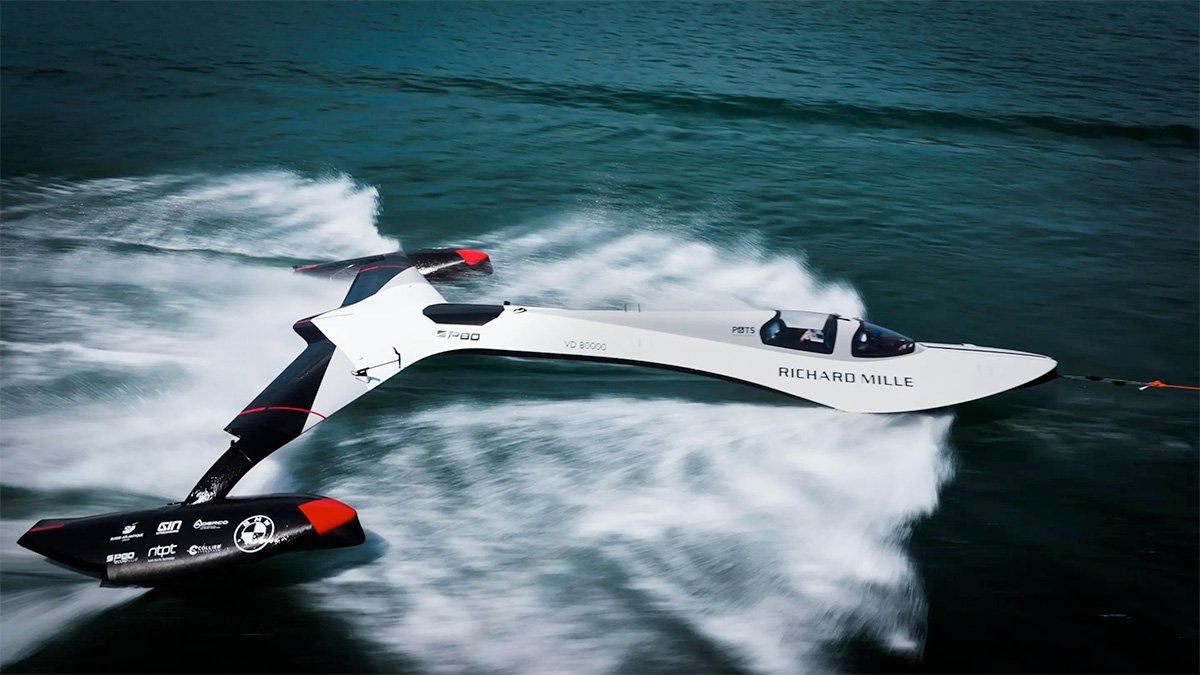The SP80 sailboat, a sleek and futuristic trimaran, has recently hit the water for testing, aiming to set new benchmarks in sailing speed. Aiming to shatter the decade-long standing record of 65.37 knots (75.23 mph or 121.06 km/h), set by Paul Larsen in the Vestas Sailrocket II in 2012, the SP80 team is pursuing an ambitious target of 81 knots (93 mph or 150 km/h). This bold undertaking involves unique design and engineering strategies, making the SP80 one of the most innovative sailboats on the water today.
A radical approach to sailing
Unlike traditional sailboats that rely on rigid masts and sails, which pose a risk of capsizing when pushed to extreme speeds, the SP80 employs a radically different approach. Instead of conventional sails, the SP80 uses a large kite attached to the boat by a strong line. This setup allows the boat to harness wind power more effectively without the risk of rolling over, a common issue with rigid masts when exposed to high winds.
The SP80 is designed as a trimaran, a type of boat featuring three hulls. Its main focus is to keep all three hulls in contact with the water, minimizing the risk of capsizing due to high-speed airflow. The 10.5-meter (34.4-foot) trimaran accommodates two crew members seated in tandem. The rear seat occupant is responsible for managing the kite via a control arm located behind the cabin, while the front seat occupant handles the steering. This strategic distribution of tasks ensures optimal control over both speed and direction.
Testing and performance evaluation
The SP80 team conducted a series of tests on Lake Geneva last year, where the boat achieved speeds of 30 knots while being towed by a support vessel. This initial testing phase aimed to measure drag and validate the team’s computer-modeled predictions against real-world performance data. The results from these tests are crucial for fine-tuning the boat’s design and enhancing its speed capabilities.

Following these drag tests, the SP80 team is gradually progressing towards deploying the kite system under real sailing conditions. The team plans to start with smaller kites and incrementally increase their size and power, which will subsequently enhance the boat’s speed. This phased approach allows the team to systematically identify and address any design or performance issues before attempting to break the world speed record.
Innovative design features
The SP80’s design is not just about functionality but also aesthetics. The trimaran’s sleek, elegant lines give it a futuristic appearance that sets it apart from conventional sailboats. Some have likened its design to something out of a science fiction movie, with a silver reskin and a backdrop reminiscent of a distant galaxy.

This visual appeal, however, does not detract from its core objective: to break the world sailing speed record. The design elements, including the three hulls, the tandem seating, and the kite system, all contribute to achieving this goal by providing stability, control, and efficient wind harnessing capabilities.
The path ahead
While the SP80 has shown promise in its initial testing phases, there is still a long road ahead. The team must continue to refine and optimize the design to achieve the desired speed of 81 knots. This involves not only enhancing the kite system and hull design but also conducting rigorous testing under various wind and water conditions.

The SP80 team is optimistic about their chances of breaking the world record, and their innovative approach to sailboat design has already set them apart in the competitive world of speed sailing. As they continue their efforts, the sailing community watches with keen interest, eager to see if the SP80 can indeed achieve what many have considered impossible.
Source: SP80



